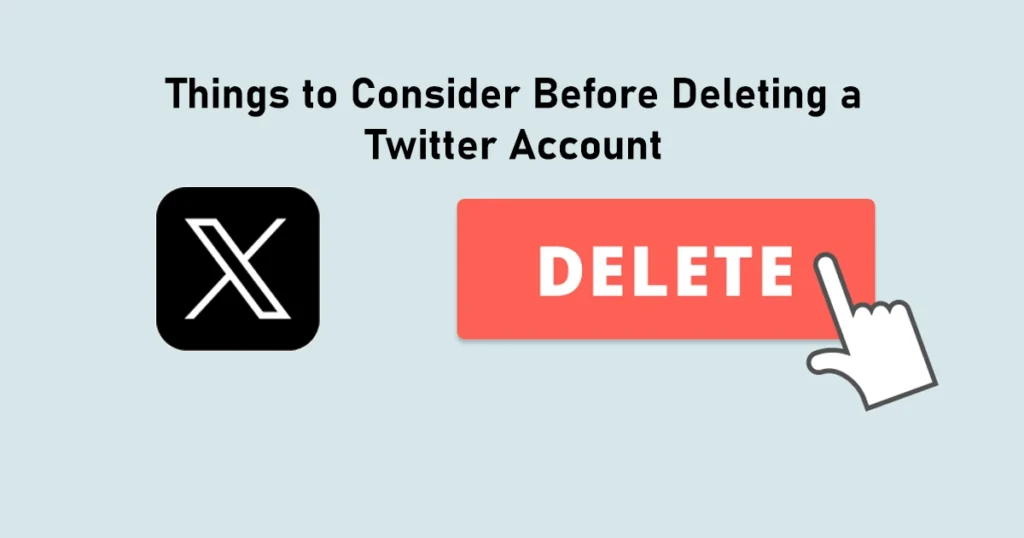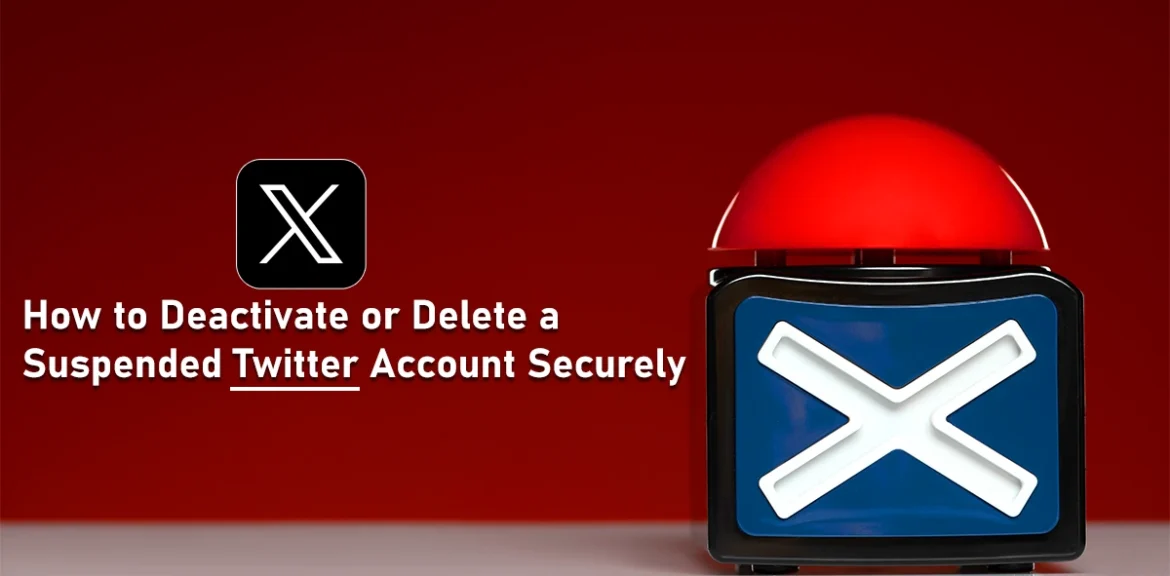In a world where hot takes and endless threads can literally drown out each other in constantly refreshing timelines, choosing to leave Twitter isn’t impulsive goes with serious intention. Complete digital exit necessitates stripping such a step short of functional deactivation; logging off doesn’t cut it.
The platform has its complicated process through which one deactivates an account, followed by a silent countdown to deleting the account forever, so that even complications of suspended accounts make it all the murkier.
This blog gives a formal, no-nonsense account of how to delete your Twitter account for good, and ensures that goodbye isn’t just digital but thorough and irreversible.
Understanding Twitter Account Deletion vs. Deactivation
Before exploring the actual steps, it is extremely important to know that Twitter doesn’t actually have any delete short cut. Rather, there is a deactivation followed by a deletion method in place.
Twitter gives a grace period of about 30 days in case the user deletes the account. If at the end of that period he does not log in and reactivate the account, the account will be deleted. Any activity “log in” would prove sufficient to allow reactivation within the 30 days.
Deactivate vs. Delete: Know the Difference
| Action | Meaning |
| Deactivate Twitter Account | Temporarily hides your account; recoverable within 30 days |
| Delete Twitter Account Permanently | Irreversible removal after a 30-day deactivation window lapses |
How to Delete a Twitter Account Permanently: Step-by-Step Instructions
The process of deleting your Twitter account permanently is outlined below in detail:
Sign in to your Twitter account
You must log in to your personal Twitter account using a desktop browser or the mobile app. The correct login credentials should be used. If two-factor authentication is active, you will need to have your mobile device handy for that verification.
Go to Account Settings
Desktop: Click on More on the left menu panel -> Select ‘Settings and privacy’ -> Click on ‘Your account’.
Mobile: Tap on your profile icon -> Select ‘Settings and Support’ -> Go to ‘Settings and privacy’ -> Tap on ‘Your account’.
Selecting ‘Deactivate Your Account’
Scroll down in the ‘Your account’ tab to click/tap on ‘Deactivate your account’.
You will now have an extensive overview of what deactivation is and what happens after the 30 days.
Look at the Information Provided
Before doing anything, read thoroughly their disclaimers. Here are some things to note:
The handle and email will be reusable after deletion.
You will lose access to all tweets, followers, DMs, and media.
Linked apps from Twitter will be unlinked.
Confirm Deactivation
Tap the ‘deactivate’ button. Twitter can ask you to enter your password for safety. When you confirm, your account will be deactivated.
This is not deletion but deactivation for up to thirty days, after which it can safely be deleted completely.
Things to Consider Before Deleting a Twitter Account

Take note of the following important things before proceeding to delete one’s Twitter account permanently:
Download Your Twitter Data
To maintain your digital footprint, get an archive of your Twitter data:
Go to Settings and privacy → Your account → Download an archive of your data.
Go through the verification steps.
You will get a download link through email.
Unlink Third-party Apps
Make sure you revoke access to any third-party services linked to Twitter:
Navigate to Settings and privacy → Security and account access → Apps and sessions → Connected apps.
Log Off on All Devices
Before the deactivation process begins, ensure that you log out of all devices. This ensures that you do not accidentally reactivate your account within the 30 days.
How to Deactivate a Suspended Twitter Account?
A regular question goes: What is the way to deactivate a suspended Twitter account?
If your account was suspended, you wouldn’t have any option to deactivate or delete it in the regular areas of the user interface. When your account is suspended, you cannot access account settings due to Twitter’s suspension policies.
What can be done?
File an appeal: go to Twitter’s support portal and file an appeal for lifting the suspension.
If the appeal turns out to be successful, you can log in and proceed to deactivate it.
If denied, the only possibility left is waiting for Twitter to delete the account after some time.
How Can You Delete a Suspended Twitter Account?
If you are curious about how to delete suspended Twitter accounts, here’s the truth:
You cannot choose to delete a suspended account manually.
You can solicit the deletion of the account by requesting Twitter Support: https://help.twitter.com/forms/general?subtopic=suspended
Politely request that they delete your suspended account, filling out the form with your intent.
Twitter has the right to deny a request that does not comply with its policies or security protocol.
What Happens After You Delete Twitter Account Permanently?
Once your 30 days of deactivation are over,
All your profile, tweets, followers, and account details would be removed from the face of the earth.
The handle would again be available for use by someone else unless it has been claimed by some other user.
You will never get access to any place of that account.
If you intend to delete the account permanently, then it is strongly suggested that you should not attempt different log-in attempts at this period of deactivation.
Final Thoughts
Whether for private needs or professional urgency, withdrawing from Twitter is a legitimate decision. Knowing how to delete a Twitter account for good as well as the boundaries of a suspended account ensures that the digital exit is done responsibly.
Bear in mind the 30-day grace period, the need to download your data, and the protocols involved for suspended profiles. After deletion, there is no going back; hence, the decision should be made with clarity and certainty.
For social media reformation, wherein one wants to exit Twitter, this comprehensive and professional guide would help in providing steps in exiting Twitter that keep you well-informed throughout the process.





